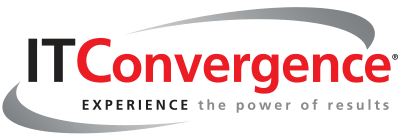The geopolitical landscape of 2025 has redefined volatility, transforming supply chain planning from a tactical necessity into a critical enterprise strategy. For years, executive leaders have navigated disruptions ranging from financial crises to pandemics. Yet, the current environment is marked by an unprecedented combination of compounding variables: geopolitical tension, technology advancements (AI), supply chain interruptions, and the pervasive reality of tariff wars.
This convergence of risk has pushed the Global Economic Policy Uncertainty (GEPU) Index to a record high of 630 in 2025, dramatically exceeding the peaks seen during the 2008 financial crisis (208) and the peak of the COVID-19 disruption in 2020 (420). In this new era, trade barriers are no longer temporary negotiating tools; they have evolved into enduring instruments of economic power.
Key Takeaways
|
The result is a complex, unpredictable, and highly consequential operating environment. For organizations seeking to maintain growth and protect margins, the ability to respond to tariff shocks hinges entirely on closing the gap between insight and execution. This is precisely where modern Global Trade Management (GTM) platforms, specifically Oracle Global Trade Management (Oracle GTM), emerge as the indispensable strategic backbone.
The C-Suite Imperative: Quantifying the Cost of Uncertainty
The impact of this volatility is far-reaching, striking organizational budgets, strategic planning, and the labor market itself:
Elevated Tariff Shock
The U.S. average effective tariff rate has risen sharply, increasing from 2.5% in 2024 to 17.6% by July 2025. The threat of high-impact sectoral tariffs, such as a proposed 100% tariff on semiconductor imports into the U.S., creates immense supply chain disruptions and rapidly escalating prices.
Executive Concern and Budget Compression
The uncertainty is corrosive. 65% of CEOs view geopolitical instability as the top business disruptor in 2024. Consequently, nearly half (49%) of C-level executives expected cuts to their budgets and spending in the second quarter of 2025 due to U.S. policy changes, leading 26% to plan for pausing major projects.
Labor Market Strain
The consequences of this policy environment extend directly to talent acquisition and retention. Higher tariffs are expected to result in slower growth in median wages and job demand. By 2030, median wages are likely to be 1.6% to 4.7% lower than they would be under pre-2025 tariff levels. Critically, the inability to hire the required number of employees can cost an average organization with 1,000 employees between $563 million and $660 million in lost revenue potential over five years.
In response, an astonishing 98% of supply chain leaders are actively planning or making changes to their supply chain strategy as a result of new U.S. tariffs. This fundamental realignment requires more than just reactive changes; it demands robust, agile technology to enable a coordinated enterprise response involving the CIO, CSCO, CFO, and General Counsel (GC).
Oracle Global Trade Management: Closing the Insight-to-Execution Gap
CIOs and supply chain technology leaders recognize the urgency. The GTM software market is robust, with forecasted annual spend expected to grow at a Compound Annual Growth Rate (CAGR) of 16.7% from 2024 through 2029. Furthermore, GTM is identified as the most significant product investment anticipated for 2025 by nearly a quarter (23%) of supply chain software application buyers.
Oracle GTM is engineered to address threats, proactively shifting sourcing, establishing flexible pricing and sourcing models, and leveraging AI to decipher complex data. It operates as the critical digital capability that speeds execution and evolves business applications, data, analytics, and integrations necessary for trade agility.
The Three Strategic Pillars of Global Trade Management Agility
Oracle Global Trade Management provides the tools to move beyond firefighting and establish long-term, resilient trade strategies built on three core pillars:
1. Strategic Compliance and Risk Mitigation
In a high-risk world, GTM shifts compliance from a reactive function (a “necessary evil”) to a strategic business pillar.
- Regulatory Adherence: GTM applications supply essential capabilities for export controls, license management, denied-party screening, product classification, and duty and tax management.
- Managing Third-Party Risk: Geopolitical tension amplifies supply chain risks. GTM is critical for overseeing due diligence processes for third parties (suppliers, agents, logistics providers) involved in trade transactions, ensuring continuous monitoring against denied-party lists and sanctions.
- Audit Readiness: The platform ensures regulatory compliance and audit readiness by keeping detailed records of tariff calculations and related decisions.
2. Dynamic Scenario Planning and Financial Optimization
As the CFO focuses on quantifying tariff impacts, GTM serves as the engine for financial foresight.
- Landed Cost Simulation: GTM supports simulation of landed costs through “what-if” scenario analysis, factoring in tariffs, Incoterms, and trade agreements. This allows organizations to evaluate how potential tariff escalations (e.g., 10%, 20%, or 30%) affect revenue, cost structure, and profit margins.
- Duty Optimization: GTM applications streamline cost reduction efforts by leveraging specialized knowledge for customs procedures. This includes managing Foreign Trade Zones (FTZs), bonded warehouses, and facilitating Free Trade Agreement (FTA) qualification to reduce duties and taxes.
- Informing Strategy: Financial models built on GTM data can determine the optimal strategy for pricing, deciding whether to absorb costs or pass them to customers to maintain competitiveness.
3. Integrated Supply Chain Resilience and AI-Driven Automation
Tariff policy is forcing supply chain network reassessment, requiring diversification of sourcing to low-tariff regions or domestic sources.
- Network Reassessment: Network shifts are time-consuming; it may take longer than 12 months for 54% of CSCOs to shift 25% of their supply to regional sources. Oracle Global Trade Management provides the granular, real-time data needed for quick decision-making on network design.
- Classification Efficiency: The complexity of classifying goods (HS, HTS, ECCN codes) is foundational for accurate duty calculation. Oracle GTM incorporates machine learning (ML) for product classification, enhancing automation and compliance efficiency. GTM vendors are actively integrating AI/GenAI for tasks such as automated HS classification, customs declaration control, and regulatory watch, delivering faster decision-making.
- Platform Integration: Oracle GTM is deployed as a dedicated public cloud solution and integrates natively with core enterprise systems like Oracle E-Business Suite, Oracle Cloud ERP, and Oracle SCM. This integrated platform approach is crucial because GTM solutions are typically most valuable when they move beyond tactical use and integrate with core systems. This integration facilitates the necessary cross-functional alignment, ensuring that operational decisions are instantly informed by financial and legal consequences.
The Strategic Value of Platform Consistency
CIOs must rely on technology that supports agility. The integrated nature of Oracle Global Trade Management provides essential strategic advantages: it removes data silos and ensures that the General Counsel, who is responsible for regulatory intelligence and screening, and the CSCO, who manages supply chain adaptation, are working from the same legal, financial, and operational reality.
By leveraging modern GTM capabilities, enterprises can move beyond ad hoc responses. They can use technology and AI to perform continual scanning for disruptive events, applying strategies in iterative sprints, thereby establishing an adaptive strategic planning process.
The message is clear: sustained economic expansion and competitive advantage in this VUCA environment is achieved not by avoiding risk, but by enabling technological agility. Oracle Global Trade Management delivers the foundational stability, compliance accuracy, and financial foresight needed to transform today’s tariff volatility from a threat into a strategic opportunity.
Frequently Asked Questions (FAQs)
- Why are legacy trade systems insufficient for today’s tariff environment?
Legacy systems lack automation, real-time updates, and cross-functional integration, leaving organizations vulnerable to compliance errors, penalties, and missed duty-saving opportunities. - How does Oracle GTM help reduce tariff-related costs?
Oracle GTM enables landed cost simulations, automates duty optimization through FTZ/FTA management, and ensures classification accuracy with AI, helping companies proactively manage costs. - What risks do businesses face if they delay adopting a GTM solution?
Delayed adoption means exposure to higher duties, compliance penalties, and supply chain disruptions. In 2025’s volatile climate, even short delays can mean millions lost in margin erosion. - Who benefits most from Oracle GTM?
CIOs, CSCOs, CFOs, and General Counsel teams benefit equally, aligning finance, compliance, and operations under one integrated platform that drives agility and resilience.
Disclaimer:
The information presented in this blog is for educational and informational purposes only. IT Convergence is a technology and ERP systems advisory firm. While we closely monitor the tax, trade, and tariff volatility landscape, we focus on helping organizations prepare their Oracle environments accordingly. We do not provide tax or legal advice, nor do we interpret tax legislation.
We recommend that all organizations consult with qualified tax or legal advisors to assess their specific obligations based on industry, entity classification, and jurisdiction.
IT Convergence supports customers in configuring, optimizing, and future-proofing their systems for compliance but does not assume responsibility for legal or fiscal determinations.




